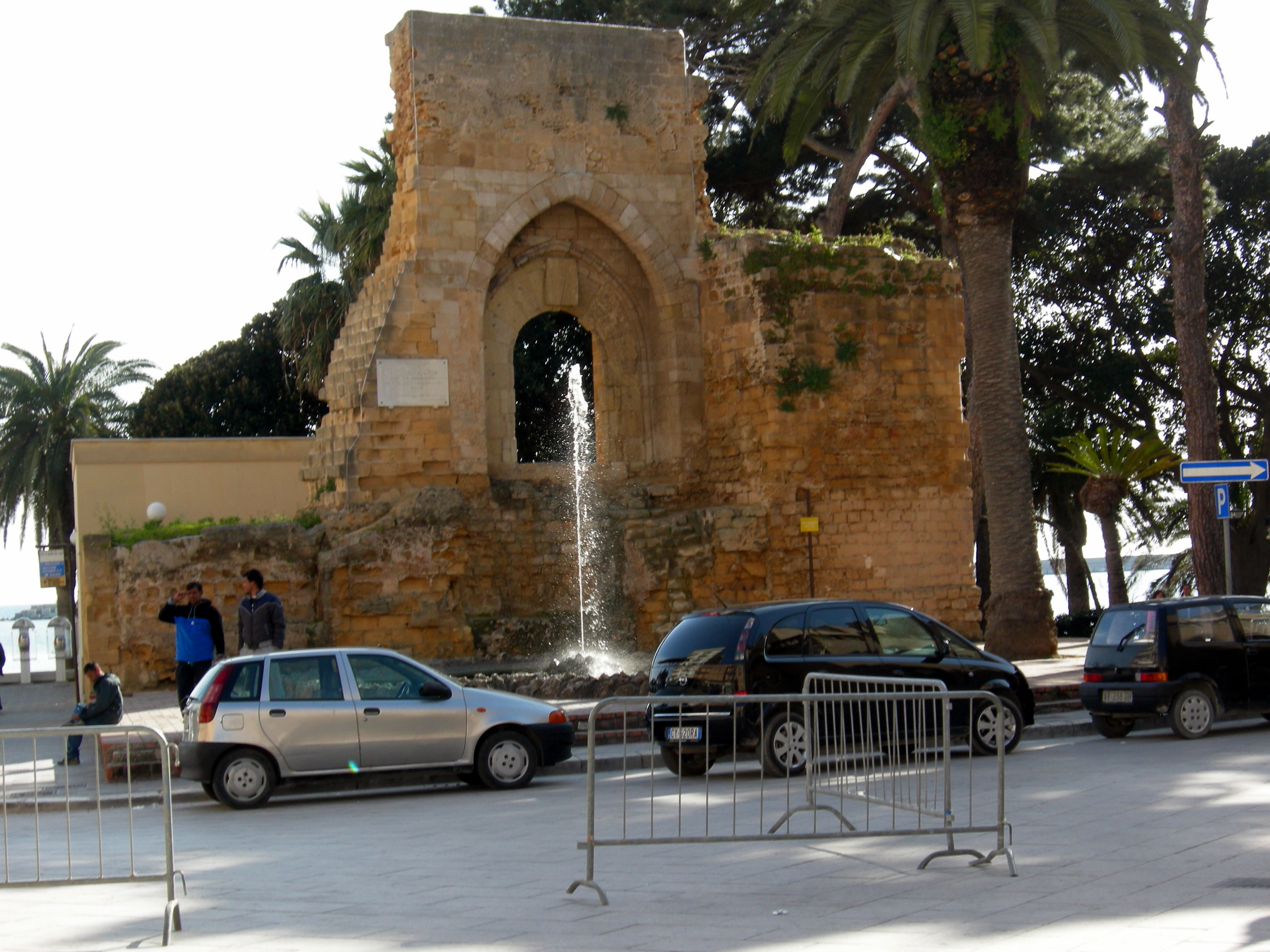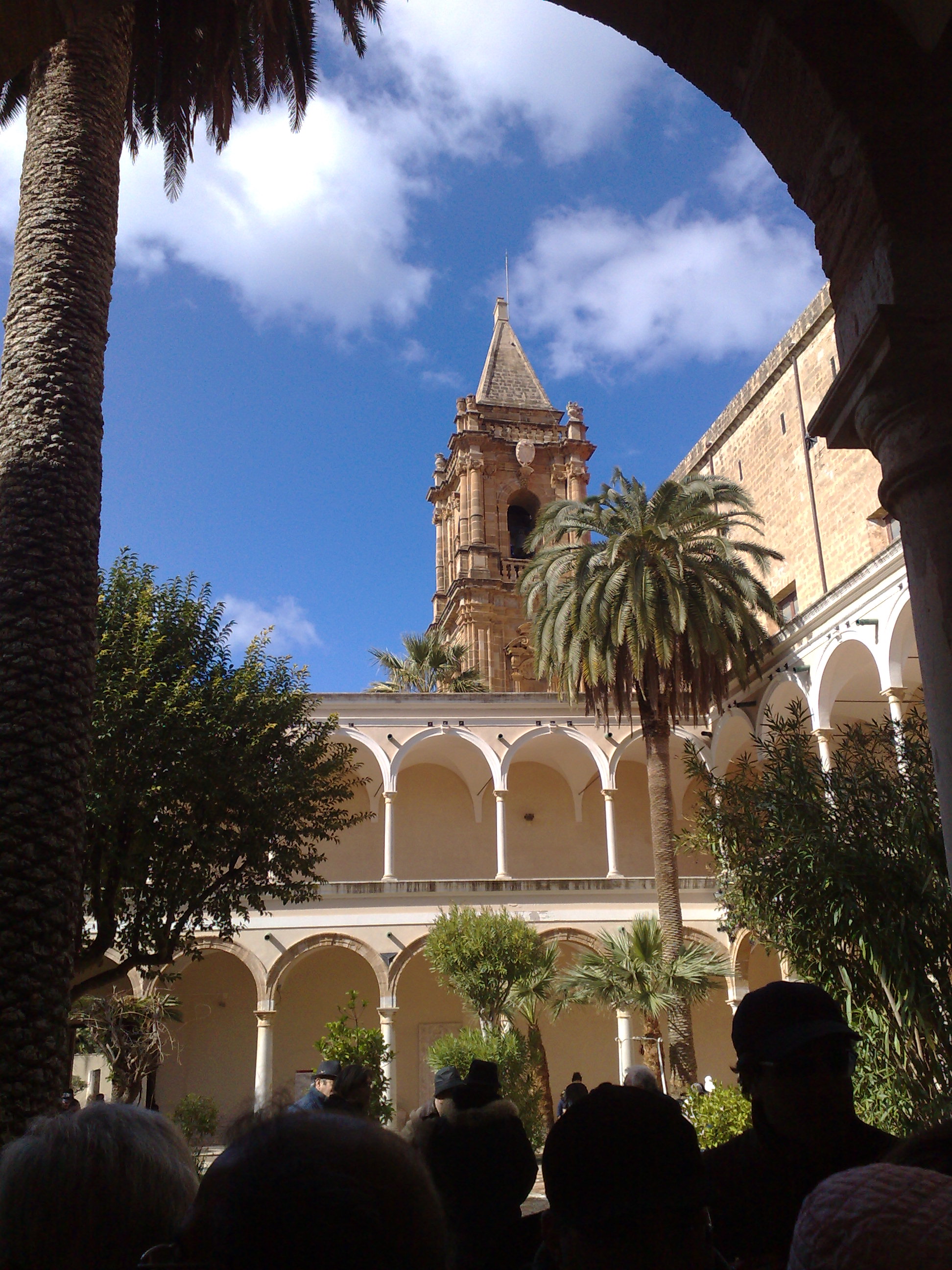|
Salemi
Salemi is a town and ''comune'' in southwestern Sicily, Italy, administratively part of the province of Trapani. History Salemi is where Giuseppe Garibaldi announced the annexation of Sicily on May 14, 1860, as part of the Expedition of the Thousand, briefly making the town his headquarters after his landing at Marsala two days earlier. From Alicia to Salemi Located on the slopes of Monte delle Rose Mazzaro between the river and the river Grande, the town is situated on the site of the ancient city Elima of Halyciae. Theatre of the continuous wars between Selinunte and Segesta, Salemi (or rather: Alicia as it was known in these times), probably due to their common origin, has always been allied with Segesta. In 272 BC, Salemi (then known as Alicia) was conquered by the Romans and declared a free city and free from taxes for its voluntary submission. In the fifth century, like the rest of Sicily, Salemi fell under the dominion of the Vandals, and then under that of the Goths ... [...More Info...] [...Related Items...] OR: [Wikipedia] [Google] [Baidu] |
Province Of Trapani
Trapani ( it, Provincia di Trapani, scn, Pruvincia di Tràpani; officially ''Libero consorzio comunale di Trapani'') is a province in the autonomous island region of Sicily, southern Italy. Following the suppression of the Sicilian provinces, it was replaced in 2015 by the Free municipal consortium of Trapani. Its capital is the city of Trapani. It has an area of and a total population of 433,826 (2017). There are 25 comunes (Italian: ''comuni'') in the province (see Comuni of the Province of Trapani). History The area now covered by the province was occupied successively by the Carthaginians, Greeks and latterly by the Romans. The port of Trapani, first known as Drepana, then Drepanon, was inhabited by the Sicani and the Elymi becoming a prosperous Phoenician trading centre by the 8th century BC. It was taken by the Carthaginians in 260 BC and by the Romans in 240 BC, becoming a ''civitas romana'' until 440 AD when it was sacked by the Vandals, then by the Byzantines and ult ... [...More Info...] [...Related Items...] OR: [Wikipedia] [Google] [Baidu] |
Castelvetrano
Castelvetrano ( scn, Castiḍḍuvitranu) is a town and ''comune'' in the province of Trapani, Sicily, southern Italy. The archeological site of Selinunte is located within the municipal territory. The municipality borders with Campobello di Mazara, Mazara del Vallo, Menfi, Montevago, Partanna, Salemi and Santa Ninfa. History The first recorded mentions of Castelvetrano in the historical record date back to the 12th and 13th centuries. By the 15th century, records exist of a federation of local cities which includes Castelvetrano. The church of St. John, outside the city walls, dates back to this period and was founded in 1412. Economy The economy is based predominantly on farming, with the cultivation of vines and olive trees being the main focus. Woodworking (mainly furniture) is also an important sector. Both Valle del Belìce olive oil and Nocellara del Belice DOP table olives have a protected status in the European Union. Main sights The center of Castelvetr ... [...More Info...] [...Related Items...] OR: [Wikipedia] [Google] [Baidu] |
Mazara
Mazara del Vallo (; ) is a town and ''comune'' in the province of Trapani, southwestern Sicily, Italy. It lies mainly on the left bank at the mouth of the Mazaro river. It is an agricultural and fishing centre and its port gives shelter to the largest fishing fleet in Italy. Recently it has been a hotspot for migrants from North Africa. History Etymology and origins Mazara was founded by the Phoenicians in the 9th century BC with the name of ''Mazar'' who made it an important mercantile emporium. The discovery of Phoenician vases demonstrate the existence of a Phoenician port built between the 6th and 5th centuries BC. Other evidence is in the palace of the Knights of Malta, where finds show the existence of the ancient Punic trading post. Also a stone slab engraved with a Phoenician inscription found in the channel of the river Màzaro is now preserved in the Museum of the Dancing Satyr. It then passed under the control of Greeks, Carthaginians, Romans, Vandals, Ostrogo ... [...More Info...] [...Related Items...] OR: [Wikipedia] [Google] [Baidu] |
Sicily
(man) it, Siciliana (woman) , population_note = , population_blank1_title = , population_blank1 = , demographics_type1 = Ethnicity , demographics1_footnotes = , demographics1_title1 = Sicilian , demographics1_info1 = 98% , demographics1_title2 = , demographics1_info2 = , demographics1_title3 = , demographics1_info3 = , timezone1 = CET , utc_offset1 = +1 , timezone1_DST = CEST , utc_offset1_DST = +2 , postal_code_type = , postal_code = , area_code_type = ISO 3166 code , area_code = IT-82 , blank_name_sec1 = GDP (nominal) , blank_info_sec1 = €89.2 billion (2018) , blank1_name_sec1 = GDP per capita , blank1_info_sec1 ... [...More Info...] [...Related Items...] OR: [Wikipedia] [Google] [Baidu] |
Charles III Of Spain
it, Carlo Sebastiano di Borbone e Farnese , house = Bourbon-Anjou , father = Philip V of Spain , mother = Elisabeth Farnese , birth_date = 20 January 1716 , birth_place = Royal Alcazar of Madrid, Spain , death_date = , death_place = Royal Palace of Madrid, Spain , place of burial= El Escorial , religion = Roman Catholicism , signature = Autograph Charles III of Spain.svg Charles III (born Charles Sebastian; es, Carlos Sebastián; 20 January 1716 – 14 December 1788) was King of Spain (1759–1788). He also was Duke of Parma and Piacenza, as Charles I (1731–1735); King of Naples, as Charles VII, and King of Sicily, as Charles V (1734–1759). He was the fifth son of Philip V of Spain, and the eldest son of Philip's second wife, Elisabeth Farnese. A proponent of enlightened absolutism and regalism, he succeeded to the Spanish throne on 10 August 1759, upon the death of his childless half-brother Ferdinand VI. In 173 ... [...More Info...] [...Related Items...] OR: [Wikipedia] [Google] [Baidu] |
Turkic Peoples
The Turkic peoples are a collection of diverse ethnic groups of West Asia, West, Central Asia, Central, East Asia, East, and North Asia as well as parts of Europe, who speak Turkic languages.. "Turkic peoples, any of various peoples whose members speak languages belonging to the Turkic subfamily...". "The Turkic peoples represent a diverse collection of ethnic groups defined by the Turkic languages." According to historians and linguists, the Proto-Turkic language originated in Central-East Asia region, potentially in Mongolia or Tuva. Initially, Proto-Turkic speakers were potentially both hunter-gatherers and farmers, but later became nomadic Pastoralism, pastoralists. Early and Post-classical history, medieval Turkic groups exhibited a wide range of both East Asian and West-Eurasian physical appearances and genetic origins, in part through long-term contact with neighboring peoples such as Iranian peoples, Iranian, Mongolic peoples, Mongolic, Tocharians, Yeniseian people, and ... [...More Info...] [...Related Items...] OR: [Wikipedia] [Google] [Baidu] |
Partanna
Partanna is a town and ''comune'' in province of Trapani, south-western Sicily, southern Italy. It is south-east of Trapani Trapani ( , ; scn, Tràpani ; lat, Drepanum; grc, Δρέπανον) is a city and municipality (''comune'') on the west coast of Sicily, in Italy. It is the capital of the Province of Trapani. Founded by Elymians, the city is still an impor .... References External links Official website Municipalities of the Province of Trapani {{Sicily-geo-stub ... [...More Info...] [...Related Items...] OR: [Wikipedia] [Google] [Baidu] |
Monte San Giuliano
Erice (; scn, Èrici) is a historic town and ''comune'' in the province of Trapani, Sicily, in southern Italy. Geography The main town of Erice is located on top of Mount Erice, at around above sea level, overlooking the city of Trapani, the low western coast towards Marsala, the dramatic Punta del Saraceno and Capo San Vito to the north-east, and the Aegadian Islands on Sicily's north-western coast. Casa Santa forms part of Erice at the base of Mount Erice, immediately adjacent to Trapani. A cable car joins the upper and lower parts of Erice. The bordering municipalities are Buseto Palizzolo, Paceco, Trapani, Valderice and Custonaci. The hamlets ('' frazioni'') are Ballata, Casa Santa, Crocefissello, Napola, Pizzolungo, Rigaletta, San Cusumano and Torretta. History The ancient Greek name of Erice was Eryx ( in Greek), and its foundation was associated with the eponymous Greek hero Eryx. It was not a Greek colony, as the Phoenicians founded it, but was largely Hel ... [...More Info...] [...Related Items...] OR: [Wikipedia] [Google] [Baidu] |
Trapani
Trapani ( , ; scn, Tràpani ; lat, Drepanum; grc, Δρέπανον) is a city and municipality (''comune'') on the west coast of Sicily, in Italy. It is the capital of the Province of Trapani. Founded by Elymians, the city is still an important fishing port and the main gateway to the nearby Egadi Islands. History Drepana was founded by the Elymians to serve as the port of the nearby city of Eryx (present-day Erice), which overlooks it from Monte Erice. The city sits on a low-lying promontory jutting out into the Mediterranean Sea. It was originally named ''Drépanon'' from the Greek word for "sickle", because of the curving shape of its harbour. Carthage seized control of the city in 260BC, subsequently making it an important naval base, but ceded it to Rome in 241BC following the Battle of the Aegates in the First Punic War. Two ancient legends relate supposed mythical origins for the city. In the first legend, Trapani stemmed from the sickle which fell from the han ... [...More Info...] [...Related Items...] OR: [Wikipedia] [Google] [Baidu] |
Feudal
Feudalism, also known as the feudal system, was the combination of the legal, economic, military, cultural and political customs that flourished in medieval Europe between the 9th and 15th centuries. Broadly defined, it was a way of structuring society around relationships that were derived from the holding of land in exchange for service or labour. Although it is derived from the Latin word ''feodum'' or ''feudum'' (fief), which was used during the Medieval period, the term ''feudalism'' and the system which it describes were not conceived of as a formal political system by the people who lived during the Middle Ages. The classic definition, by François Louis Ganshof (1944),François Louis Ganshof (1944). ''Qu'est-ce que la féodalité''. Translated into English by Philip Grierson as ''Feudalism'', with a foreword by F. M. Stenton, 1st ed.: New York and London, 1952; 2nd ed: 1961; 3rd ed.: 1976. describes a set of reciprocal legal and military obligations which existed a ... [...More Info...] [...Related Items...] OR: [Wikipedia] [Google] [Baidu] |
Aragon
Aragon ( , ; Spanish and an, Aragón ; ca, Aragó ) is an autonomous community in Spain, coextensive with the medieval Kingdom of Aragon. In northeastern Spain, the Aragonese autonomous community comprises three provinces (from north to south): Huesca, Zaragoza, and Teruel. Its capital is Zaragoza. The current Statute of Autonomy declares Aragon a '' historic nationality'' of Spain. Covering an area of , the region's terrain ranges diversely from permanent glaciers to verdant valleys, rich pasture lands and orchards, through to the arid steppe plains of the central lowlands. Aragon is home to many rivers—most notably, the river Ebro, Spain's largest river in volume, which runs west–east across the entire region through the province of Zaragoza. It is also home to the highest mountains of the Pyrenees. , the population of Aragon was , with slightly over half of it living in its capital city, Zaragoza. In 2020, the economy of Aragon generated a GDP of million, w ... [...More Info...] [...Related Items...] OR: [Wikipedia] [Google] [Baidu] |






